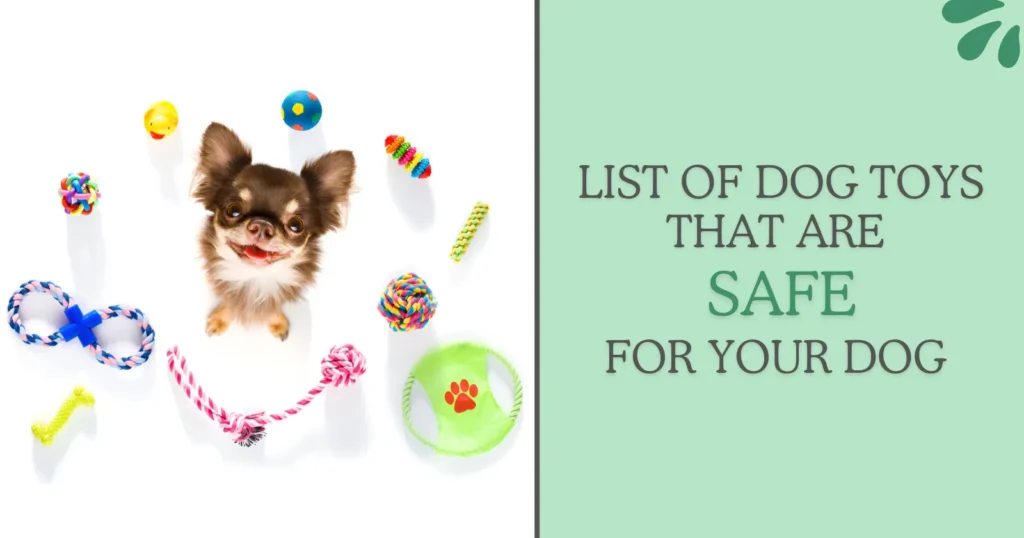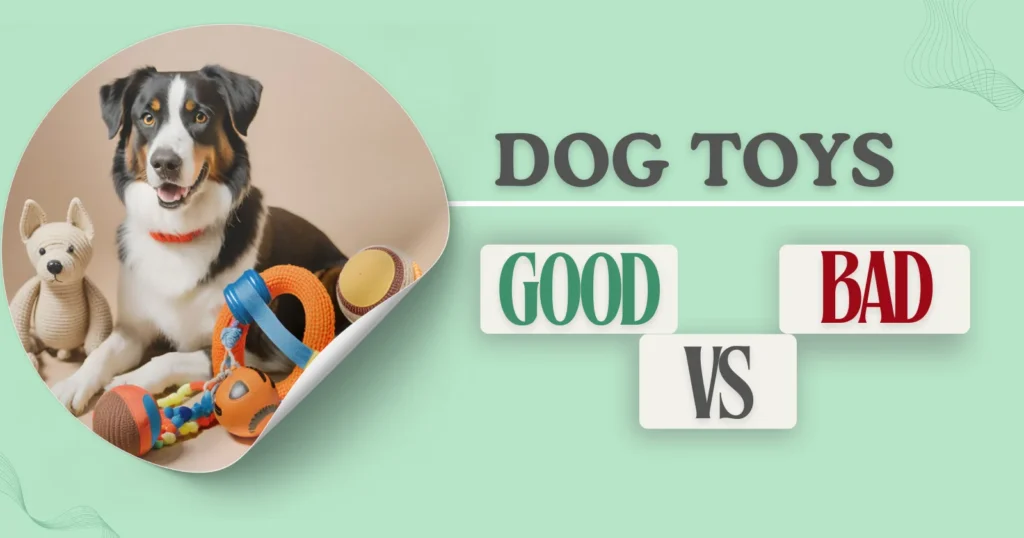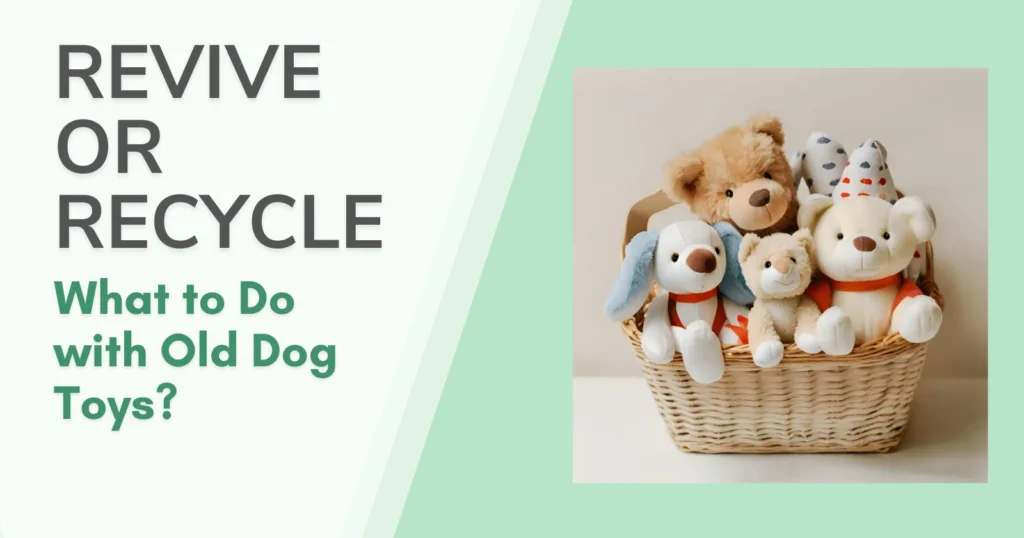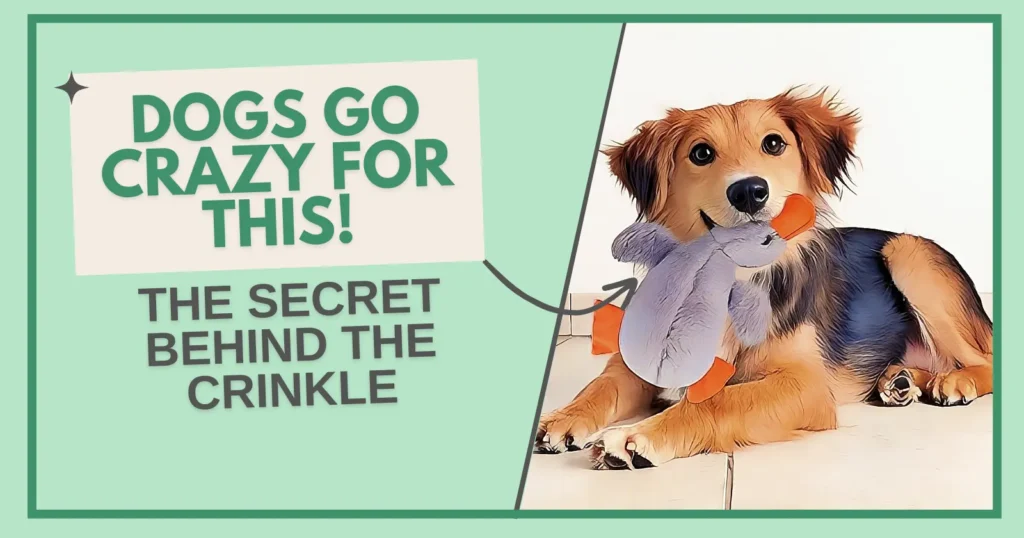

Choosing the right toys for your dog is crucial not only for their enjoyment but also for their health and safety. With a plethora of options available, it’s important to know which toys are safe and which might pose dangers. In this article, I will explore various categories of dog toys, highlighting whether they are safe and the potential risks associated with them. Let’s just dive straight into it.
Rope Dog Toys


Rope toys are excellent for dogs who love to play tug-of-war or enjoy a good chew session. These toys can help clean your dog’s teeth and can be quite durable. However, it’s important to select ropes made from natural fibers and without any harmful chemicals such as dyes and glues.
Playology co-founder Lendy Beatty told us to be discerning when buying rope toys.
Safety and Associated Risks
Poor-quality rope toys can fray and unravel, leading to ingested strands that can cause intestinal blockages. Always supervise your pet during play and discard any toy that starts to break down. Swallowing rope strands can be dangerous as they cause serious gastrointestinal problems for your pooch. To be honest, removing these fibers may even require surgery, which can be fatal. You may encounter problems such as internal bleeding and even organ failure.
What causes these rope toys to be hazardous for dogs if used as chew toys? Strands from these toys can become lodged in a dog’s mouth, causing pain or infection. More critically, ingested strands can lead to a linear foreign body, a serious condition where the intestines cinch together, restricting blood flow and causing internal damage. This can be life-threatening. Additionally, small swallowed pieces can create intestinal blockages. Therefore, it is crucial to supervise dogs with rope toys and limit their use to interactive play sessions only, especially if your furry friend is a nibbler or a shredder.
NOTE: Always discard a fraying rope toy.
Rubber Chew Toys
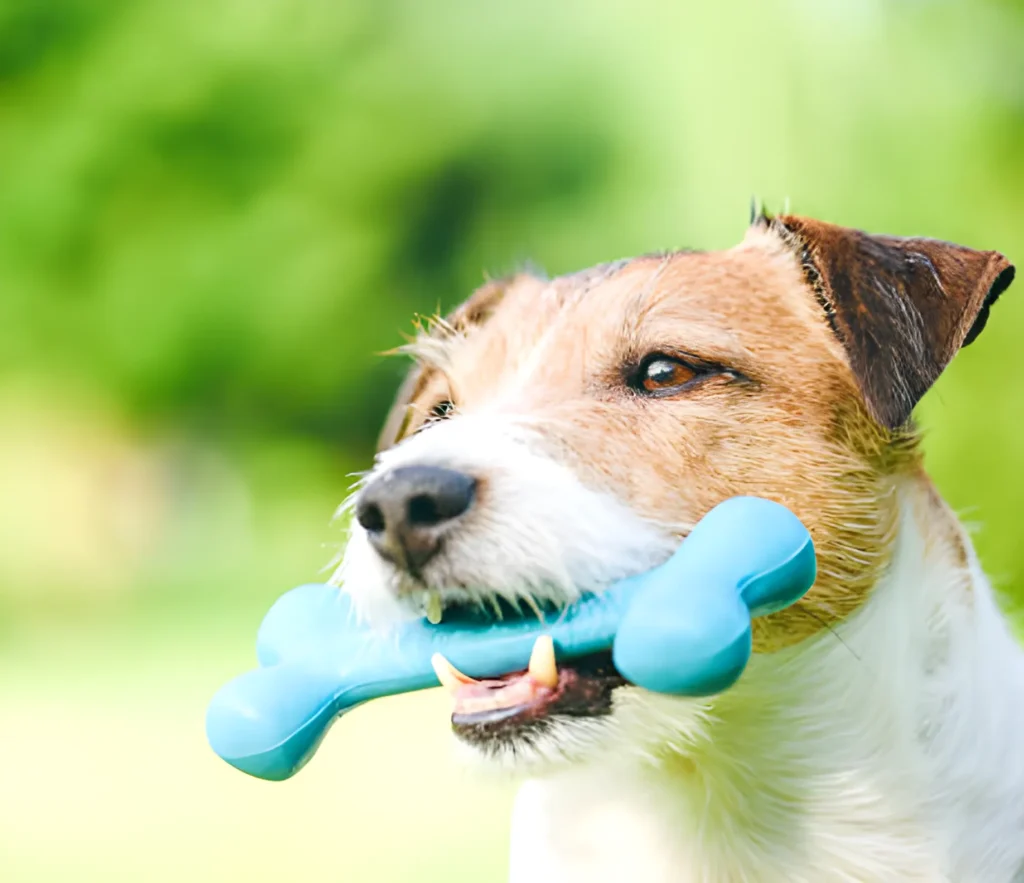

Chew toys, such as Kongs, are fantastic for dogs of all ages. They are durable, often dishwasher-safe, and can be stuffed with treats to provide extra mental stimulation. However, are rubber chew toys really safe?
Safety and Associated Risks
Ensuring that the rubber is non-toxic, made from natural ingredients and that the toy is appropriate for your dog’s size and chew strength is crucial. Small pieces can become choking hazards if bitten off.
When rubber is synthetic or fake, it can pose a serious threat to your pooch’s health.
Synthetic rubber, which is essentially a form of plastic, is created from petroleum through various refining processes to mimic the properties of natural rubber. Many toys on the market that feel like rubber are actually made from plastics and not genuine rubber, often presenting more disadvantages compared to natural rubber. Most rubber products available today are made from this synthetic variant, not the natural type.
“Avoid toys made from vinyl or rubber plastics, as they can easily tear apart, making them a risk for choking or gastrointestinal obstruction,” said Dr. McCullough.
When a rubber toy in ingested your dog will end up with symptoms such as vomiting, diarrhea and loss of appetite. Large pieces when chew off need to addressed in emergency as they lead to intestinal blockages, however smaller pieces usually pass through without any harm.
You should always consider additional elements such as batteries and squeakers in these toys. Swallowing batteries can result in chemical burns and ulcers; these damages go further than just physical blockage.
Consult with a vet as soon as possible in such cases.
Silicone Dog Toys
Silicone toys are soft and often come in various shapes and textures, which makes them mentally stimulating for our furry friends. They are generally safe for teeth and gums, making them suitable for younger pups and older dogs. Such toys are not only sturdy but also pliable, durable, and non-toxic.
Safety and Associated Risks
Always check that the silicone is food-grade and free from fillers that could be toxic if ingested. While silicone itself is generally regarded as safe, low-quality silicone toys may include fillers or chemical additives that are harmful if ingested. Some cheaper silicone toys may not be 100% pure silicone and can release harmful chemicals when chewed.
Although rare, some dogs might have allergic reactions to silicone, which can manifest as skin irritations or digestive upset.
Silicone toys might not withstand aggressive chewing. If they are too small, depending on your dog’s size, they can cause choking hazards and intestinal blocking if ingested.
My personal tip is to avoid toys that have many holes in them and always ensure that you’re buying as per your dog’s size.
Wood Chew Toys
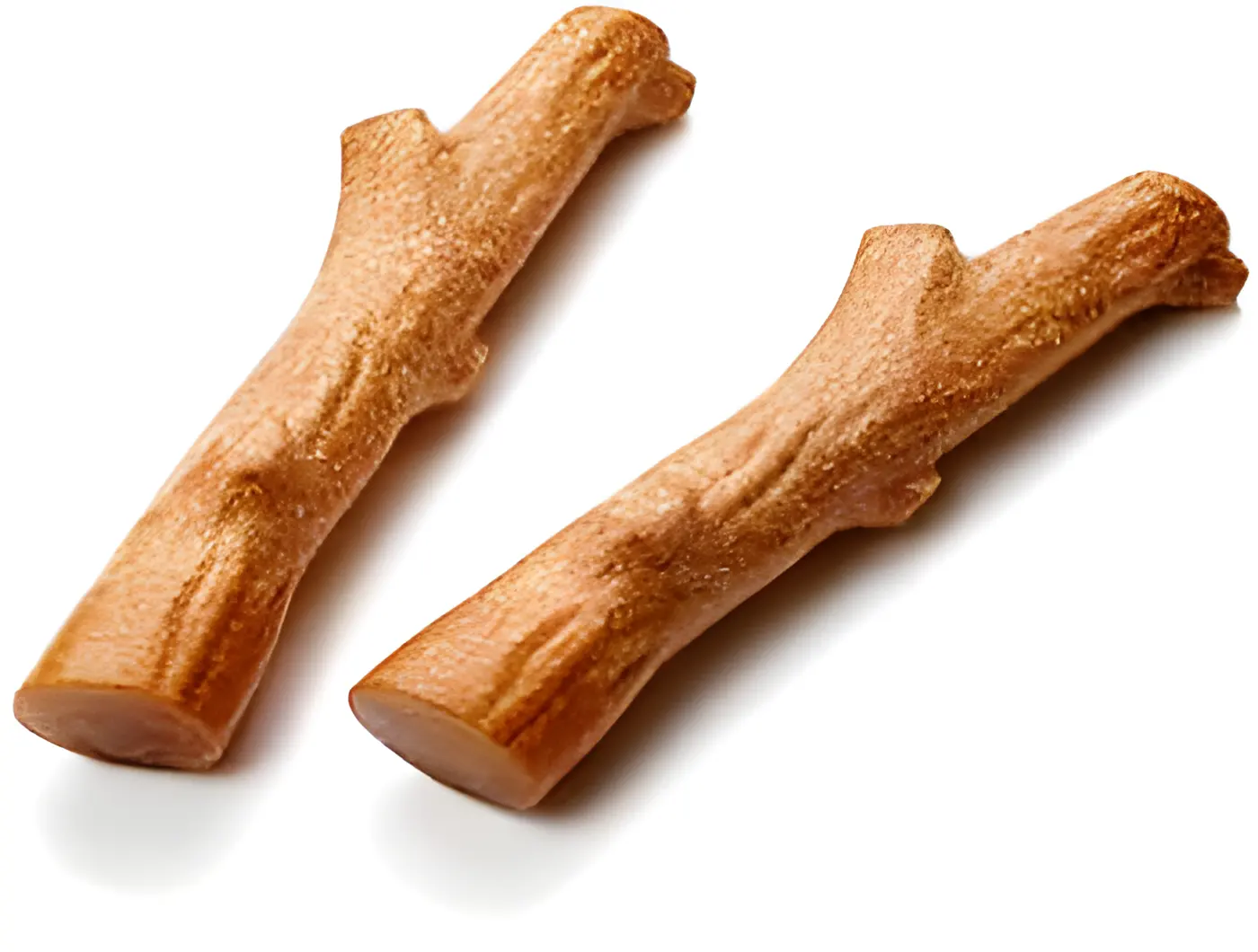

Some dogs prefer the texture of wood over other materials. Wooden toys can provide a satisfying chew experience and are often made from sustainable resources. These toys might be seemingly a good option for aggressive chewers and shredders. However, I personally fear they may not be the best option out there, in fact might be one of the worst.
Safety and Associated Risks
Wood can splinter, posing serious risks to your dog’s mouth and digestive tract. Choose toys designed specifically for dogs and avoid sticks picked up from the yard or park. They are often too hard, which is why they cause serious damage to your dog’s teeth and jaw.
I’ve learned firsthand that natural sticks and scrap wood aren’t as safe as dog toys, as they can easily splinter, posing risks of cuts or intestinal blockages, and often carry harmful fungi, bacteria, or insects. Additionally, some woods like cherry and oak are toxic to dogs. I also avoid wood toys that are soft or prone to splintering, particularly with my strong-chewing dog, after a bad experience with a toy that quickly broke apart. Wood toys with fillers have also proven to be of lower quality and potentially upsetting to my dog’s stomach. Through these experiences, I now emphasize the importance of selecting and regularly checking my dog’s toys for safety and suitability.
Hard Chew Toys
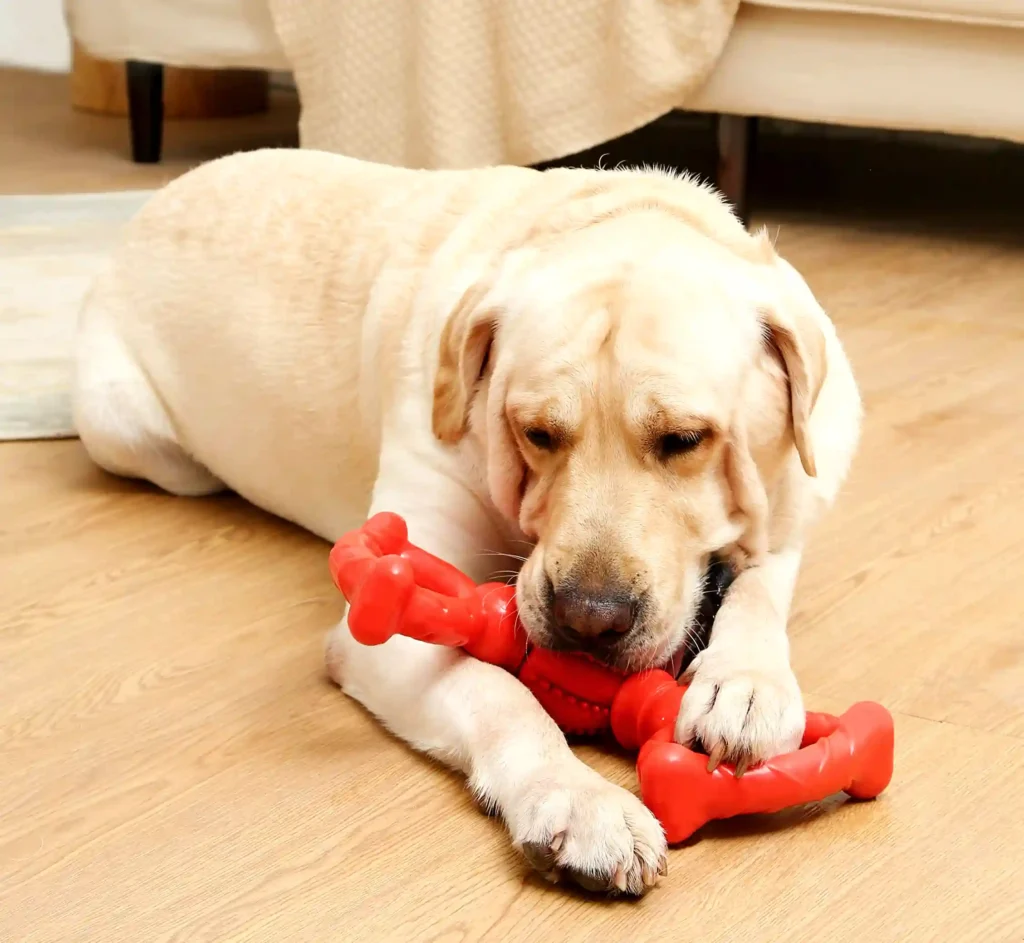

Hard chew toys, like those made from durable nylon or hard rubber, are designed to withstand aggressive chewing and can be great for dental health. Some other options are made with hard plastic.
You can simply check if these types of hard toys are safe for your furry friend by doing the fingernail test.
Safety and Associated Risks
Monitor your dog’s use of hard toys as they can damage teeth, especially in aggressive chewers. Always choose a size that matches your dog’s bite strength and size.
Hard plastic and nylon bones can be made from materials tougher than a dog’s teeth, leading to potential tooth fractures during chewing. The upper fourth premolars, which are crucial for chewing food, are the teeth most commonly damaged by these types of toys.
P.V.C., or vinyl, is commonly used in pet toys and while it is not inherently dangerous, it is a very hard material. To increase flexibility, manufacturers often add phthalates, chemicals that soften plastic. However, as a dog chews on these vinyl toys, phthalates can leach out and be absorbed through the dog’s gums or skin. Additionally, P.V.C. toys release chlorine gradually as they are chewed, potentially posing further risks to your dog’s health.
B.P.A., a chemical frequently found in plastic products, is associated with serious health issues such as cancer and hormonal disruptions. Furthermore, a 2017 study published in Science Direct indicates that B.P.A. can disturb the canine endocrine system, leading to metabolic disruptions in dogs.
NOTE: Chew toys approved by the Veterinary Oral Health Council (VOHC) , such as C.E.T. Enzymatic Hygiene, can prevent plaque and tartar accumulation on your pet’s teeth.
Squishy/Plush Toys


Squishy toys can be soothing and enjoyable for many dogs. They often come in cute shapes and can include features like squeakers. They include plush toys, stuffed toys, crinkle toys, and squeaking stuffed toys.
Plush toys are great for dogs that enjoy softer textures or are less aggressive chewers. They can offer comfort and reduce anxiety in some pets.
Safety and Associated Risks
These toys are not suitable for aggressive chewers as they can easily be torn apart, and their stuffing can be swallowed, leading to gastrointestinal damage. The stuffing and small parts (like eyes) can be hazardous if swallowed. Choose plush toys with stitched eyes and minimal loose components.
The ingesting rate is extremely high, making it unsuitable for toys. Further, they can be chemically dyed and made from cheap fibers, which is a concerning health risk since most dogs carry these toys in their mouth.
Some safe options for stuffing include polyester fiberfill, organic cotton filling, or even old t-shirts and fabric scraps. Just make sure that whatever you use is non-toxic and won’t harm your dog if ingested. Always supervise your dog while they’re playing with plush toys to ensure their safety.
Bamboo Chew Toys


Bamboo chew toys are a newer entry to the market, known for their sustainability and durability. They are a safer alternative to wood as they tend not to splinter easily. They are non-toxic as they are made from natural bamboo fibers. However, they are not to be considered an all-you-can-eat buffet.
Safety and Associated Risks
Ensure the toy is specifically designed for dogs, and always supervise your pet during play. It is safe for your dog to eat, but they might throw up anyway. It is basically really tough grass, and it won’t poison them, but they can’t digest it. The bamboo also gets woody as it grows, a dry piece will splinter badly and be sharp so don’t let them chew up the sticks.
If your dog starts showing signs of gastrointestinal distress, such as vomiting or diarrhea, after munching on bamboo, pay close attention. Other warning signs include lethargy or a sudden lack of appetite. These symptoms could indicate various conditions, so it’s crucial to observe your dog’s overall behavior closely. If something seems amiss, it’s wise to consult your veterinarian. Remember, since dogs can’t communicate their discomfort directly, we must advocate for their health.
Catnip Toys


Safety and Associated Risks
Although typically intended for cats, some dogs may be interested in catnip toys. Catnip itself is not harmful to dogs, but these toys may not be designed to withstand dog play. If consumed in large amounts, it can be a potential health risk, as catnip can calm them down if given in small amounts. Therefore, it is crucial to see how they react to it.
I recommend not giving your dog catnip toys. While catnip isn’t harmful to dogs, if they happen to get hold of a catnip toy, you should remove it promptly from their mouth. The concern here isn’t the catnip but rather that the toy could pose a choking risk for dogs. This is because catnip toys are designed for cats and are much smaller in size.
Nylon Chew Toys


Nylon toys are known for their durability and can come in various flavors to keep your dog interested. They can withstand considerable chewing from even larger breeds. The market for dog toys has a good verdict for products such as Nyla Bones that can withstand aggressive chewing for dogs who tend to destroy every toy they get their hands on.
Safety and Associated Risks
Nylon can sometimes break into sharp pieces that can cause oral and digestive issues. Inspect these toys regularly for wear and tear. Many Nyla bones can be potentially too hard for your dog to chew on thus causing some serious dental damage.
Nylon dog chew toys can actually pose a significant choking risk. Ingesting pieces of these toys might also upset your dog’s stomach or trigger an allergic reaction. Therefore, it’s best to be cautious, even with chew toys marketed as edible, when offering them to your dog or puppy. Even those toys that are ‘safely edible’ are not considered 100% safe.
My partner’s mother experienced the tragic loss of one of her dogs due to an impaction caused by a nylabone and synthetic string. It appears that fragments of the nylabone intertwined with strings from another toy, creating an indigestible clump of synthetic material that the dog couldn’t pass.
Nerf Dog Toys
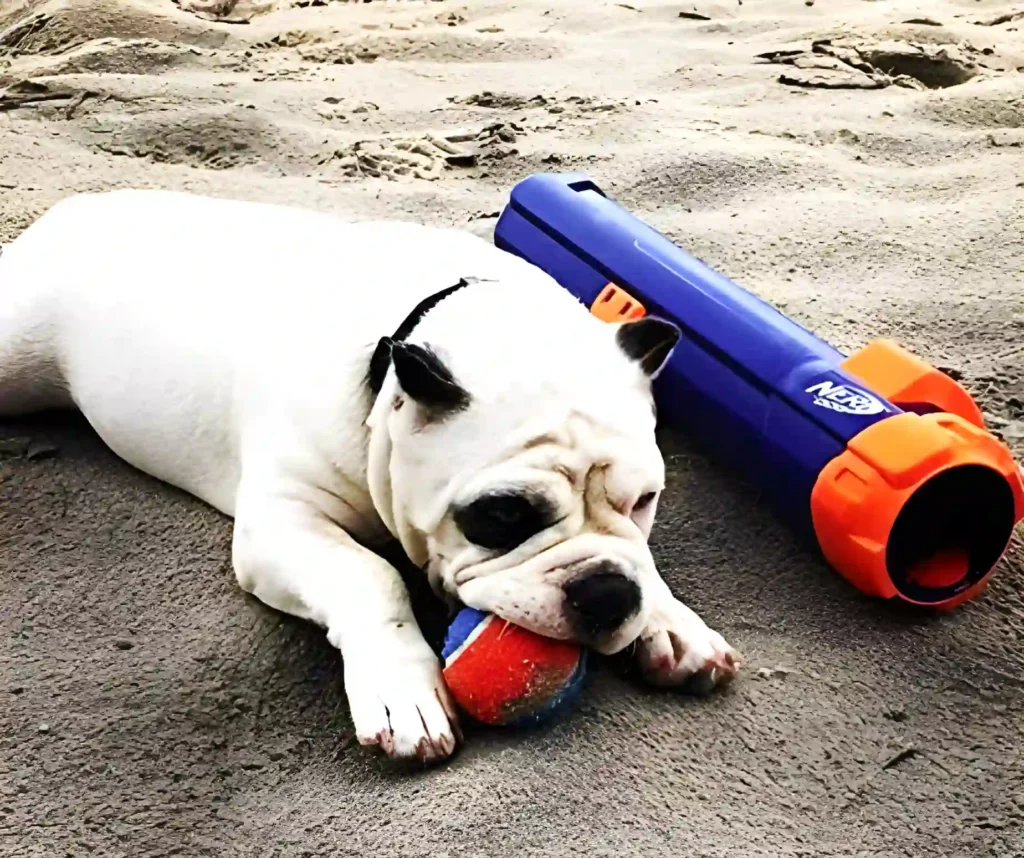

Nerf toys, designed specifically for dogs, are made from durable rubber and foam. They are excellent for interactive play like fetch. However, even though well-tested, they can cause serious damage.
Safety and Associated Risks
Ensure that any Nerf toy you choose is the version designed for dogs, as regular Nerf toys may not be safe for chewing and could break into small, ingestible parts.
User is cautioned against the dangers of foam guns, noting their potential to cause severe injuries, including loss of vision, in small animals due to their power. The colorful bullets might attract curious pets. If a pet swallows a foam gun bullet, it could lead to a life-threatening blockage.
Conclusion
Selecting the right toys for your dog involves more than just picking the cutest or most colorful option on the shelf. As we’ve explored, while many toys offer fun and enrichment, they also come with varying levels of risk, especially for aggressive chewers. From the dangers of splintering wood and sharp nylon pieces to the choking hazards posed by plush toys and small Nerf bullets, the potential for injury is significant.
Rope toys, though great for dental health and tug-of-war games, can unravel and cause gastrointestinal issues if ingested. Similarly, hard chew toys like those made from nylon or hard plastics can break into jagged pieces, damaging your dog’s mouth or causing internal harm. Toys with added elements like squeakers or batteries present additional risks if chewed open.
Choosing toys that are appropriate for your dog’s size, chewing style, and material safety is crucial. Opt for toys made from natural, non-toxic materials without loose parts or harmful chemicals. Always supervise your dog during playtime to ensure they are safe and not ingesting any part of their toys.
Ultimately, while no toy is 100% safe, being informed and vigilant can help minimize risks. Regular inspections for wear and tear and immediate disposal of damaged toys can prevent many common toy-related injuries. Remember, your dog’s safety is more important than a moment of entertainment. For those looking for the safest options, consider toys approved by reputable organizations like the Veterinary Oral Health Council, F.D.A. and always keep your vet’s advice in mind when introducing new toys to your furry friend’s collection.

